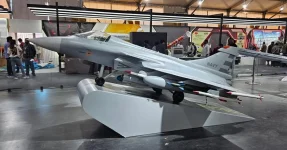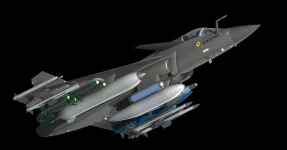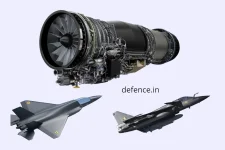- Views: 2K
- Replies: 13
A former Royal Air Force (RAF) instructor, with experience training Indian pilots, has suggested that the Indian Air Force (IAF) should contemplate retiring its fleet of SEPECAT Jaguar strike aircraft, primarily citing safety concerns associated with the ageing platform.
Tim Davis, speaking candidly to Indian media, provided an in-depth look at the aircraft, which India continues to operate decades after it was phased out by other user nations.
Mr. Davis noted the Jaguar served the UK for 34 years, mainly undertaking low-level strike missions – a role similar to its current deployment within the IAF.
However, he pointed out that by the late 1990s, the RAF recognised the aircraft's limitations as more advanced jets like the Tornado GR4 and Eurofighter Typhoon offered superior performance, range, payload capacity, and modern avionics.
"The Typhoon had more powerful engines, updated avionics, and could carry more fuel and weaponry," Mr. Davis explained, adding, "So the Jaguar became a little bit redundant."
Highlighting design aspects, Mr. Davis described the Jaguar as fundamentally challenging, particularly for pilot training. "It had a very small wing and was initially designed as a flying training aircraft, but that proved very difficult for the students," he stated.
He praised the calibre of Indian pilots he trained but expressed concern over past incidents involving demanding aircraft. "I trained many Indian students in the Royal Air Force—very good pilots all of them—but some were killed when they went back and flew aircraft like the Mig-21 and the Jaguar. The Jaguar is a difficult aircraft to fly. It takes a lot of talent and skill."
Further elaborating on its technical aspects, Mr. Davis mentioned the Jaguar lacks modern fly-by-wire flight control systems found in newer fighters. This absence makes the aircraft more physically demanding for pilots and less forgiving of errors.
"We did have some accidents with the aircraft. It couldn’t carry as many bombs or as much fuel as its successors," he recalled from his RAF experience.
India has made significant efforts to keep its Jaguar fleet operational, upgrading them with precision weaponry and improved avionics. The IAF operates several squadrons of these ground-attack aircraft, known locally as 'Shamsher'.
A major upgrade plan intended to equip the jets with more powerful Honeywell F125IN engines was eventually cancelled in 2019 due to cost implications and integration challenges.
Despite these upgrades, Mr. Davis warned about the unavoidable issue of airframe fatigue in older aircraft. "Even with engine and avionics upgrades, you still face issues with airframe fatigue," he cautioned.
"There’s only so much of an aircraft you can replace. Eventually, you have to restrict how fast it can go or how many Gs it can pull. And that’s when replacing the aircraft becomes a more cost-effective option."
Addressing recent discussions in India concerning military aircraft safety, often prompted by incidents, Mr. Davis stressed that pilot safety must be the top priority. "It comes down to this: even one pilot death is a tragedy. And the older the aircraft gets, the higher the risks," he asserted.
While commending the skills of Indian pilots and technicians maintaining the fleet, he questioned the long-term viability of operating the ageing jets safely: "You have very talented instructors and pilots in India keeping those Jaguars flying. But there comes a time when you must ask—how long can we keep this going safely?"
While respecting India's autonomy in national defence matters, Mr. Davis concluded, "India is more than capable of making its own decisions... But I do think the time has come to consider phasing the Jaguar out."
He suggested a structured transition, mirroring RAF procedures, involving selecting replacement aircraft, retraining pilots, and then grounding the Jaguars for enhanced safety and efficiency.
The IAF is currently undergoing significant modernization, inducting upgraded Mirage 2000 fighters, additional Su-30MKIs, and preparing for the large-scale induction of the indigenous HAL Tejas Mk1A.
Future plans also include advanced indigenous projects like the Twin Engine Deck Based Fighter (TEDBF) and the Advanced Medium Combat Aircraft (AMCA), forming the backdrop against which decisions about legacy platforms like the Jaguar will be made.




